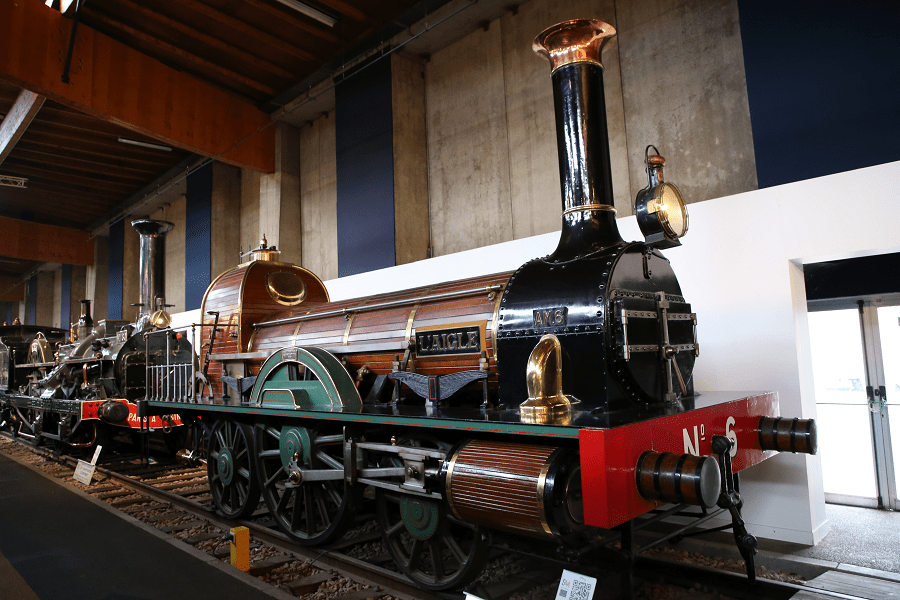The French locomotive 1-1-1 Stephenson №6 L’Aigle from 1846 (2-2-2 by British classification).
Under the Whyte notation for the classification of steam locomotives, 2-2-2 represents the wheel arrangement of two leading wheels on one axle, two powered driving wheels on one axle, and two trailing wheels on one axle. The wheel arrangement both provided more stability and enabled a larger firebox than the earlier 0-2-2 and 2-2-0 types. This configuration was introduced in 1834 on Robert Stephenson’s ‘Patentee locomotive’.
Robert Stephenson (16 October 1803 – 12 October 1859) was an English civil engineer and designer of locomotives. The only son of George Stephenson, the “Father of Railways”, he built on the achievements of his father. Robert has been called the greatest engineer of the 19th century.
By 1850 Stephenson had been involved in the construction of a third of the country’s railway system. He designed the High Level Bridge and Royal Border Bridge on the East Coast Main Line. With Eaton Hodgkinson and William Fairbairn he developed wrought-iron tubular bridges, such as the Britannia Bridge in Wales, a design he would later use for the Victoria Bridge in Montreal, for many years the longest bridge in the world. He eventually worked on 160 commissions from 60 companies, building railways in other countries such as Belgium, Norway, Egypt and France.
In 1829, he married Frances Sanderson; the couple had no children, and he did not remarry after her death in 1842. In 1847, he was elected Member of Parliament for Whitby, and held the seat until his death. Although Stephenson declined a British knighthood, he was decorated in Belgium with the Knight of the Order of Leopold, in France with the Knight of the Legion of Honour and in Norway with the Knight Grand Cross of the order of St Olaf. He was elected a fellow of the Royal Society (FRS) in 1849, and served as president of the Institution of Mechanical Engineers and Institution of Civil Engineers.
Stephenson’s death was widely mourned, and his funeral cortège was given permission by Queen Victoria to pass through Hyde Park, an honour previously reserved for royalty. He is buried in Westminster Abbey.












